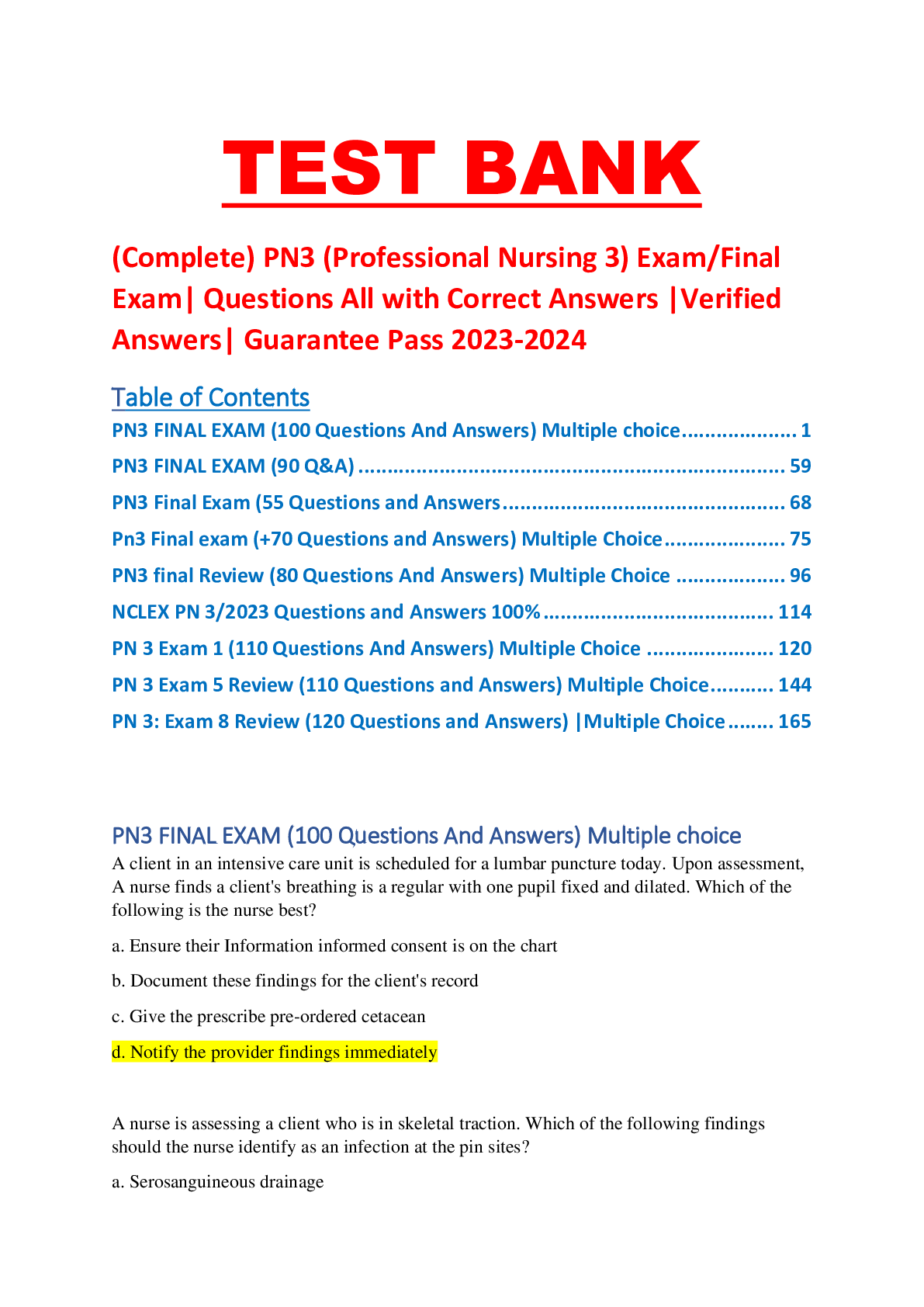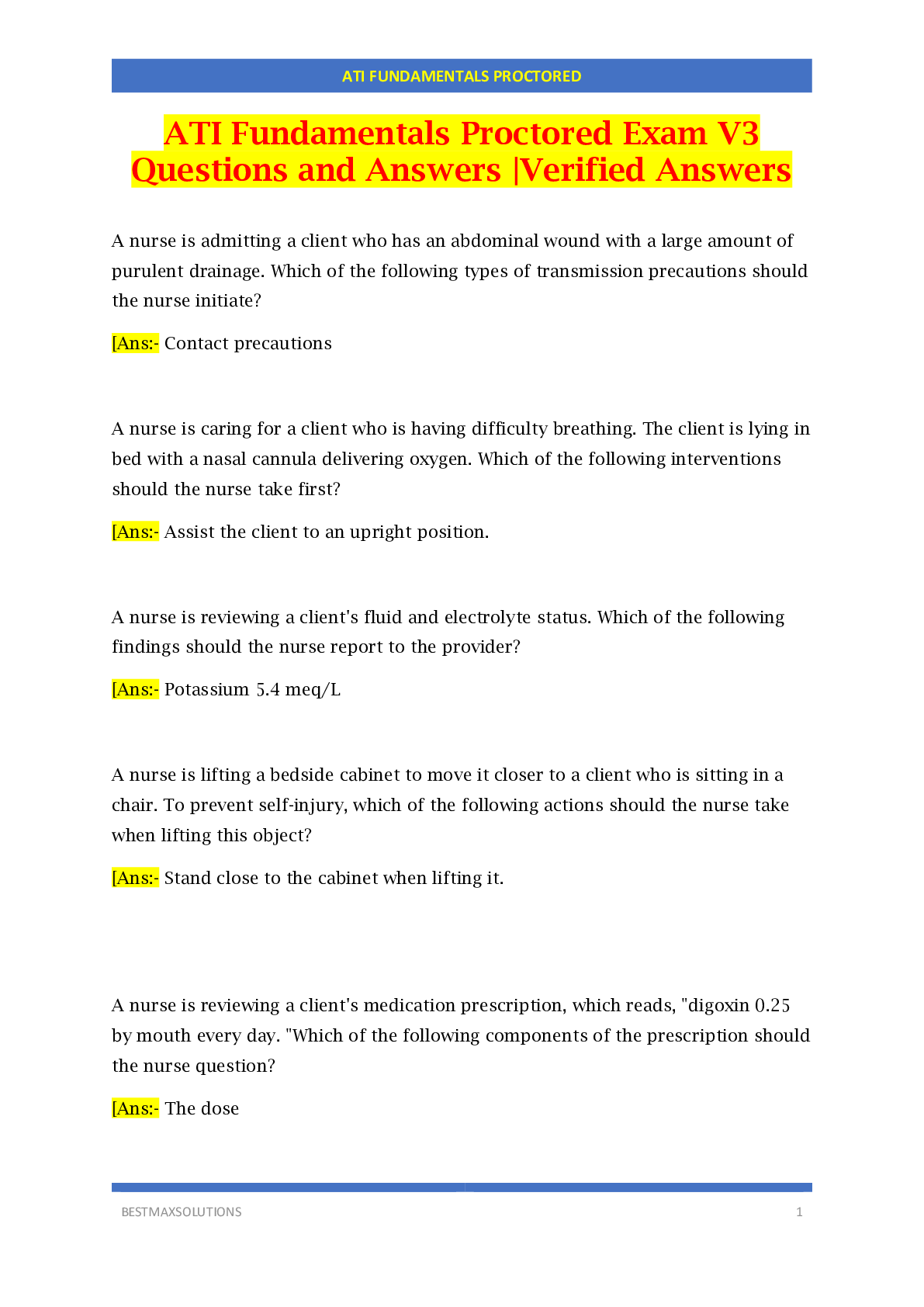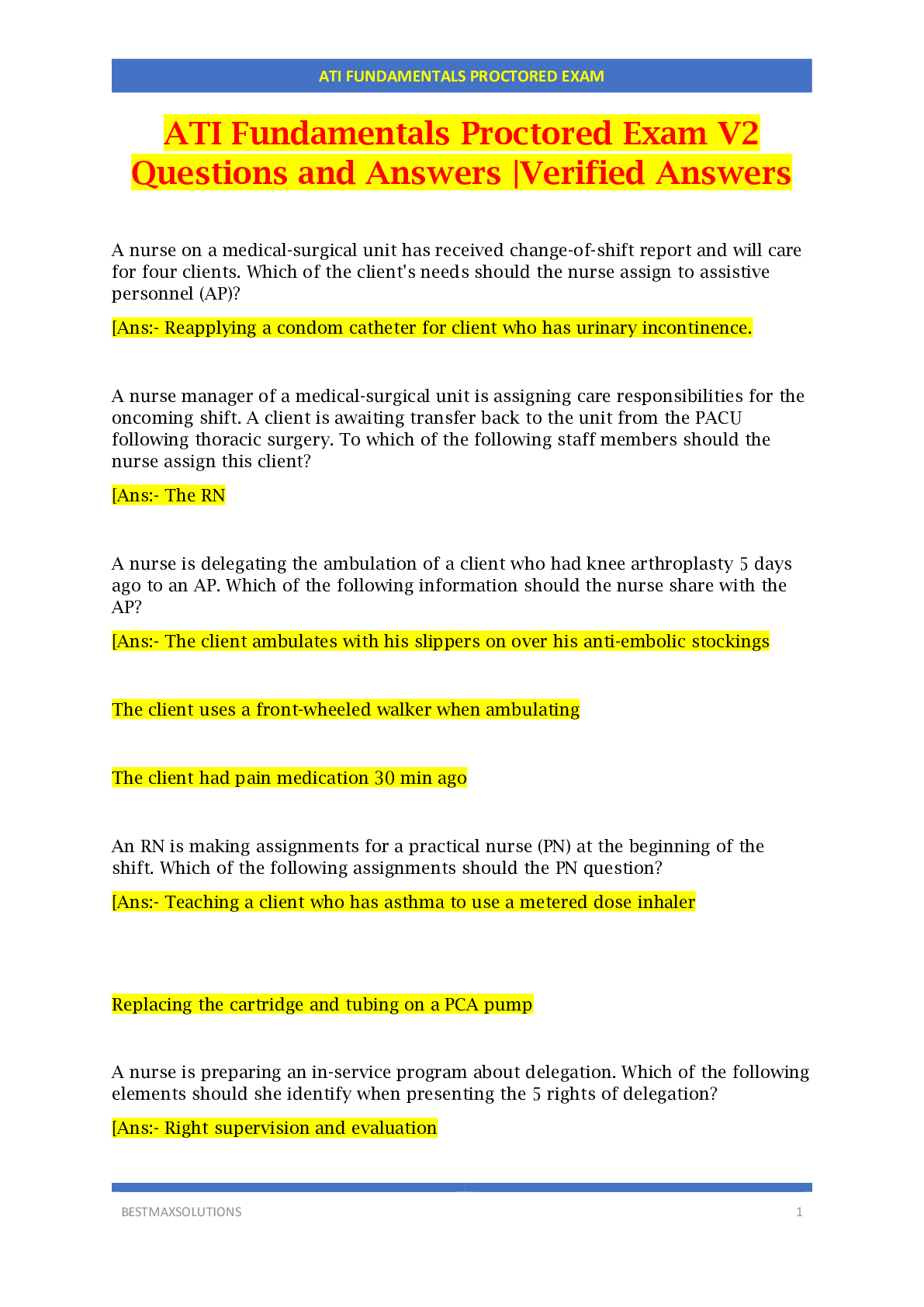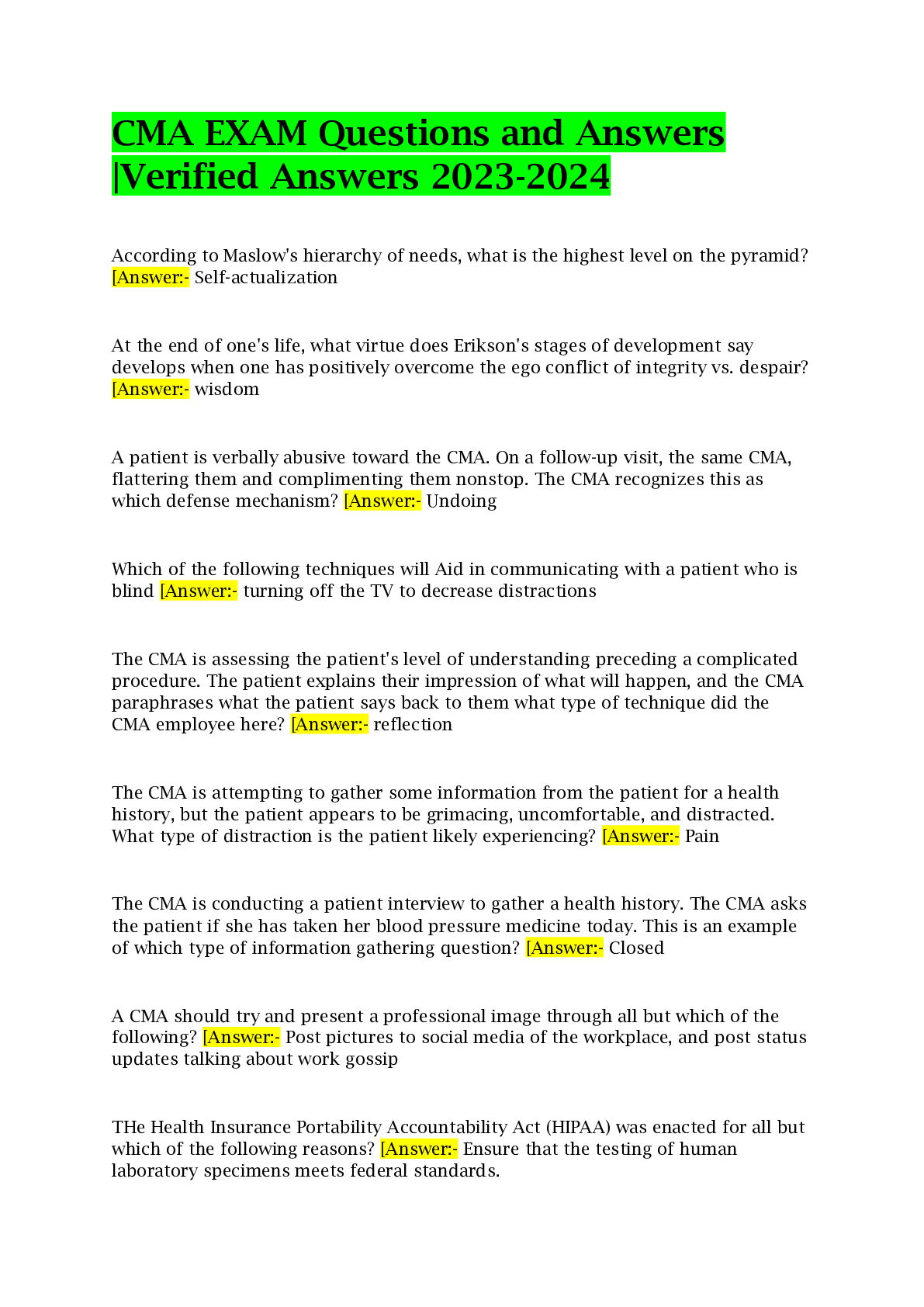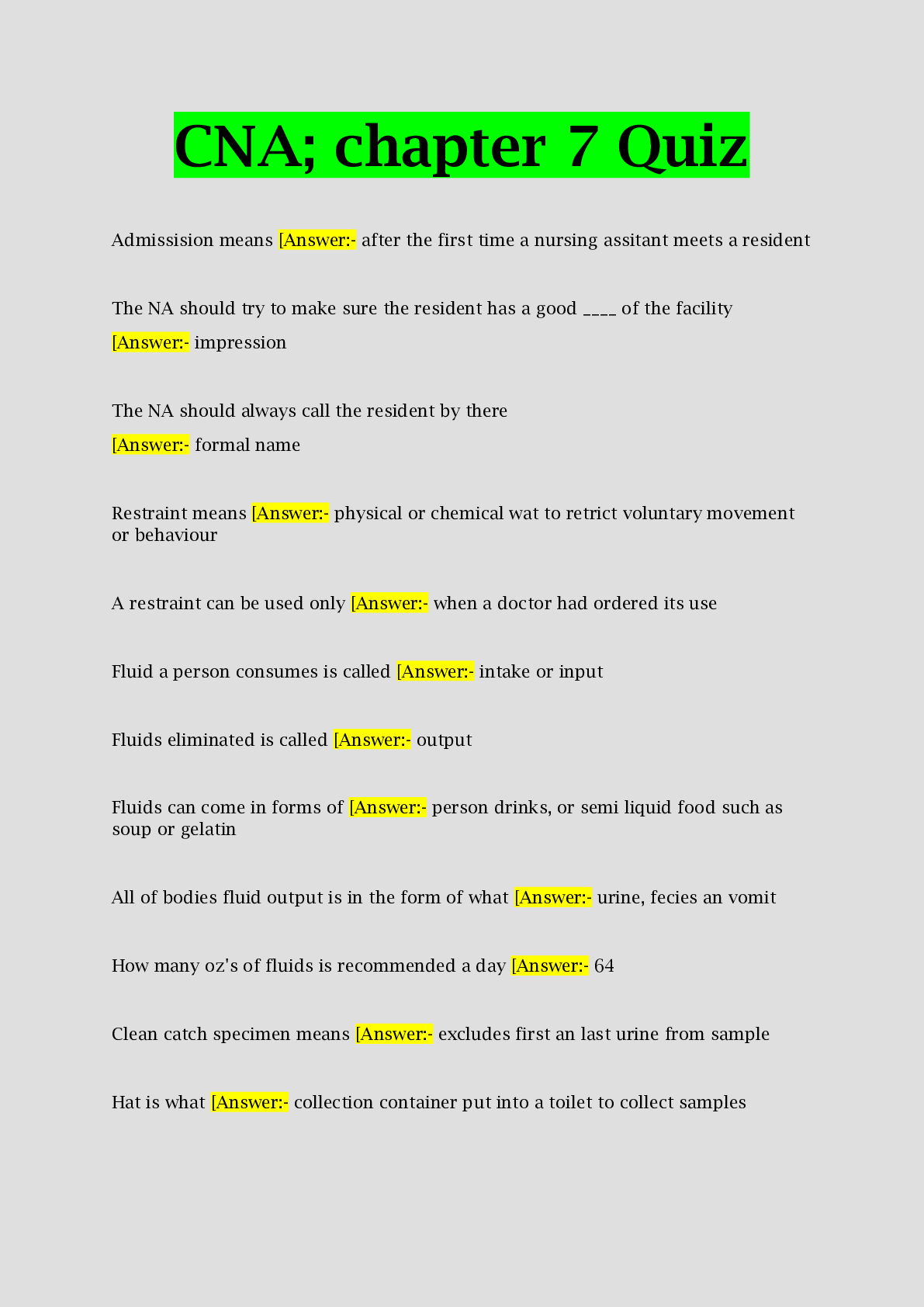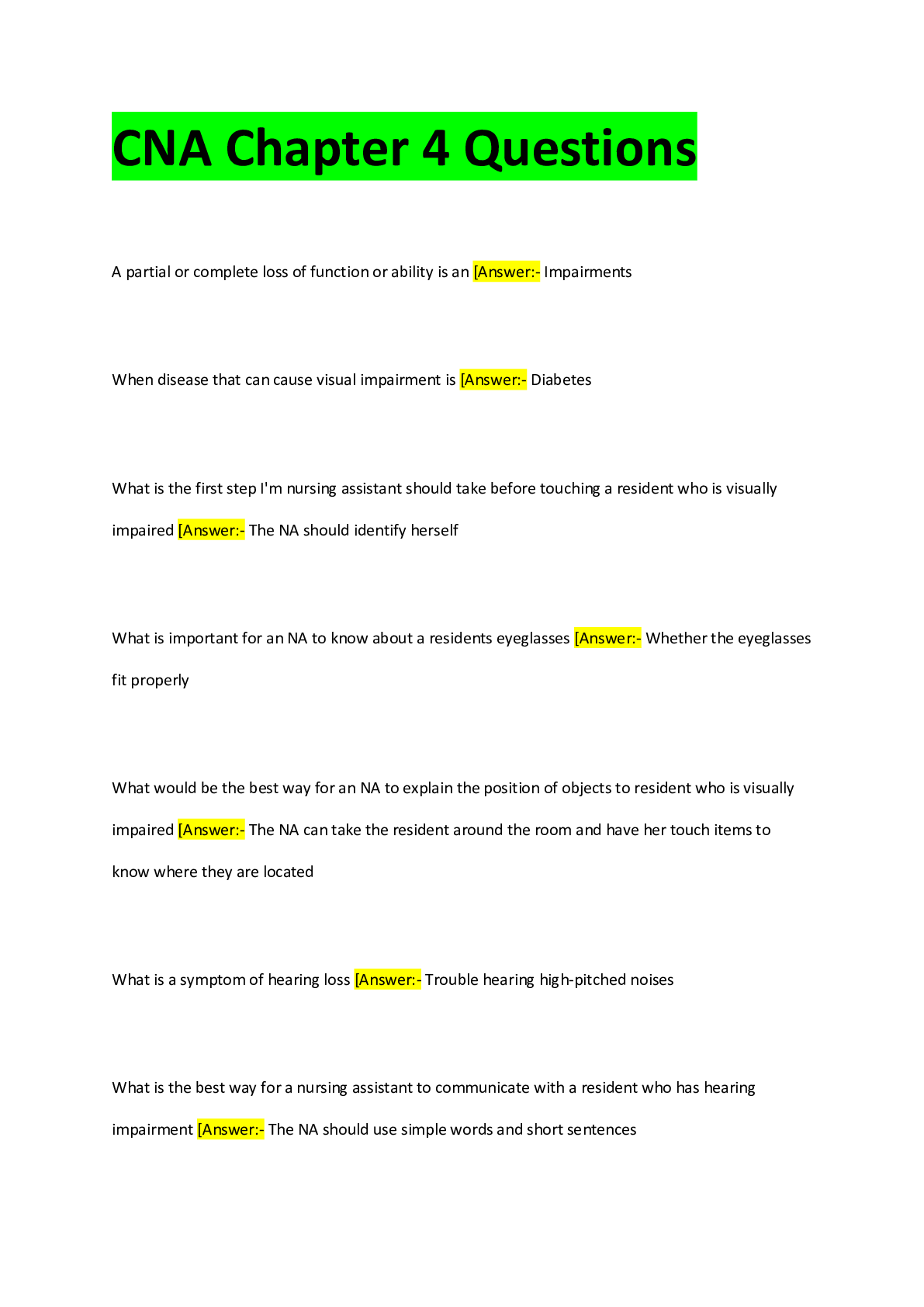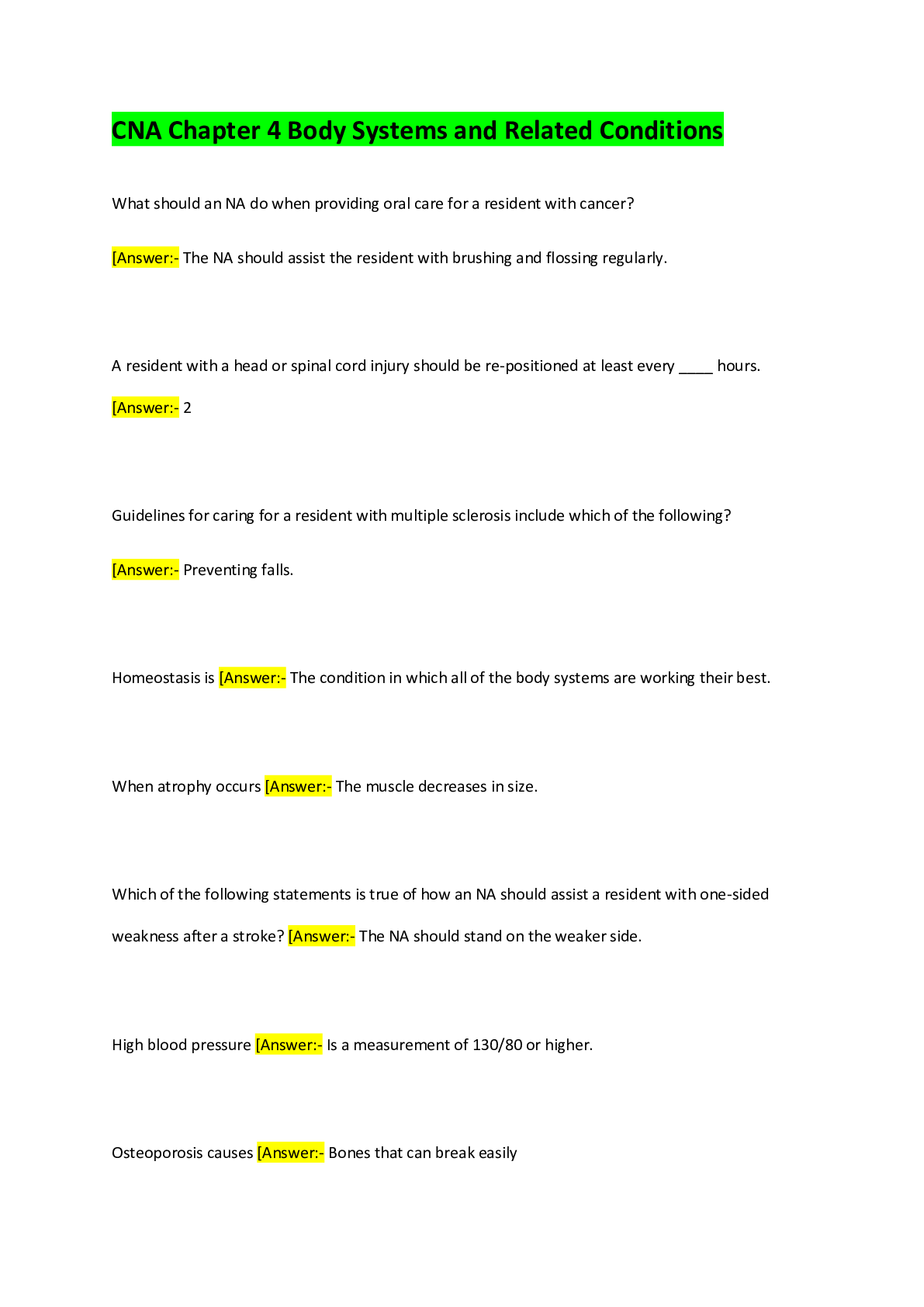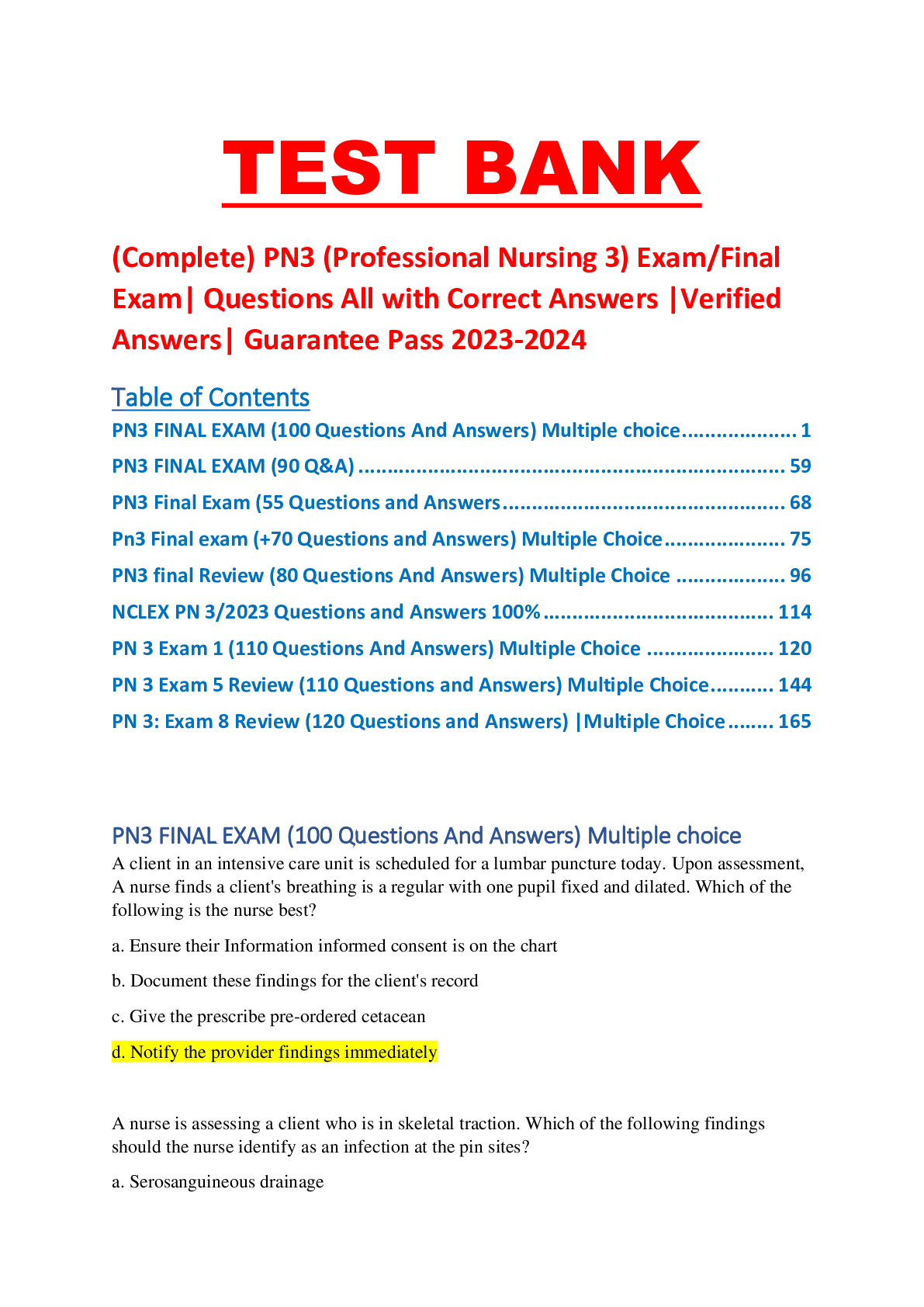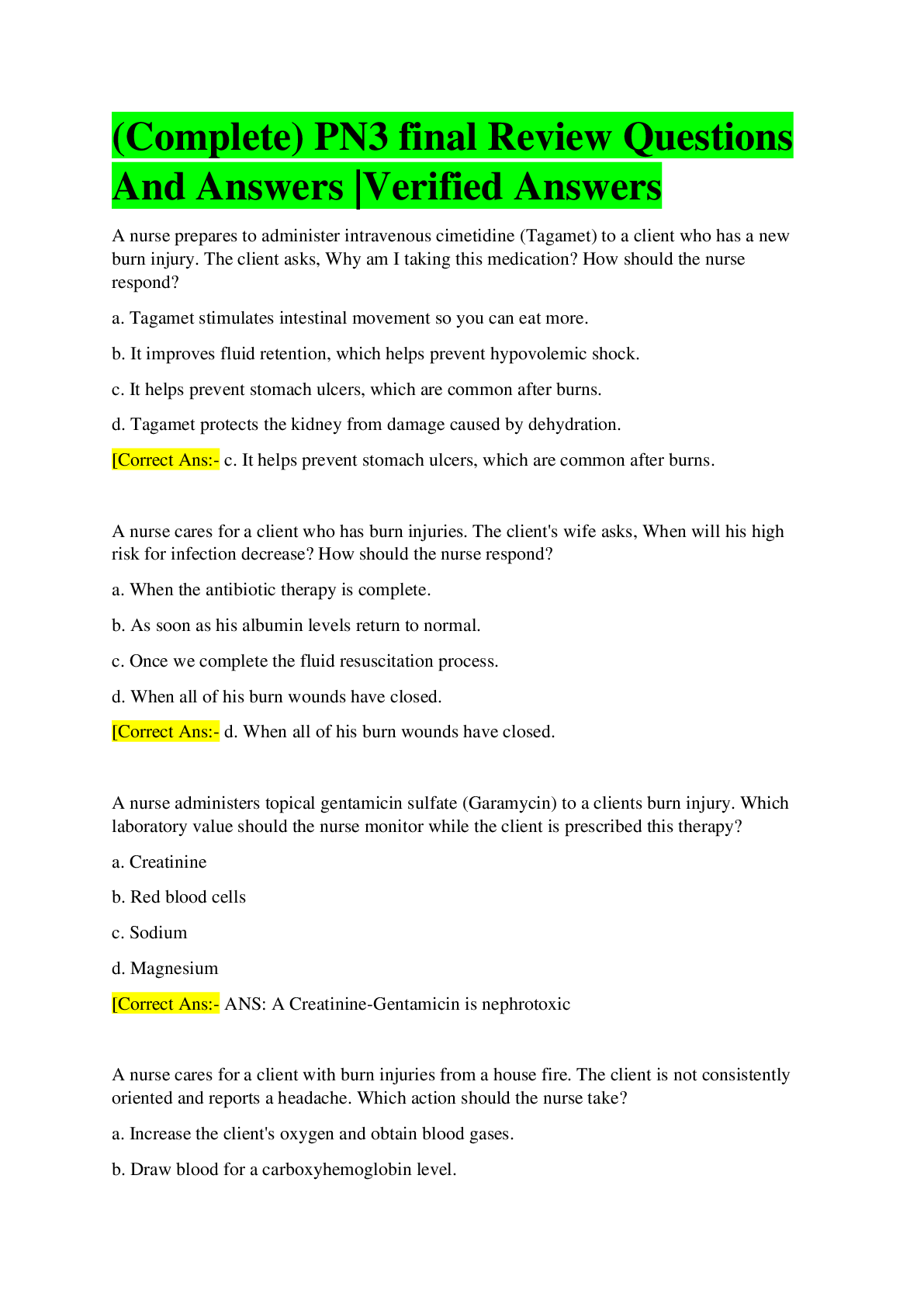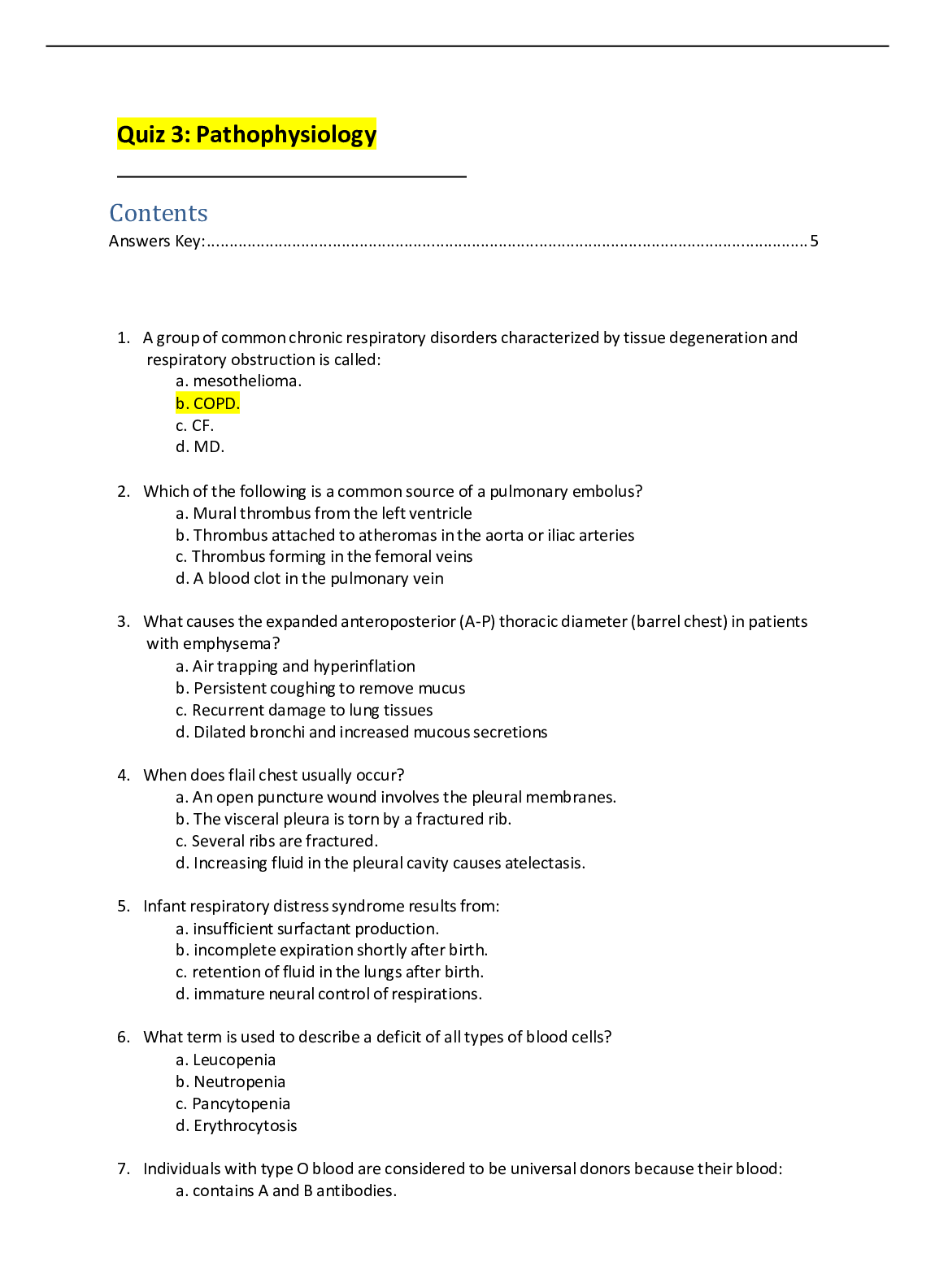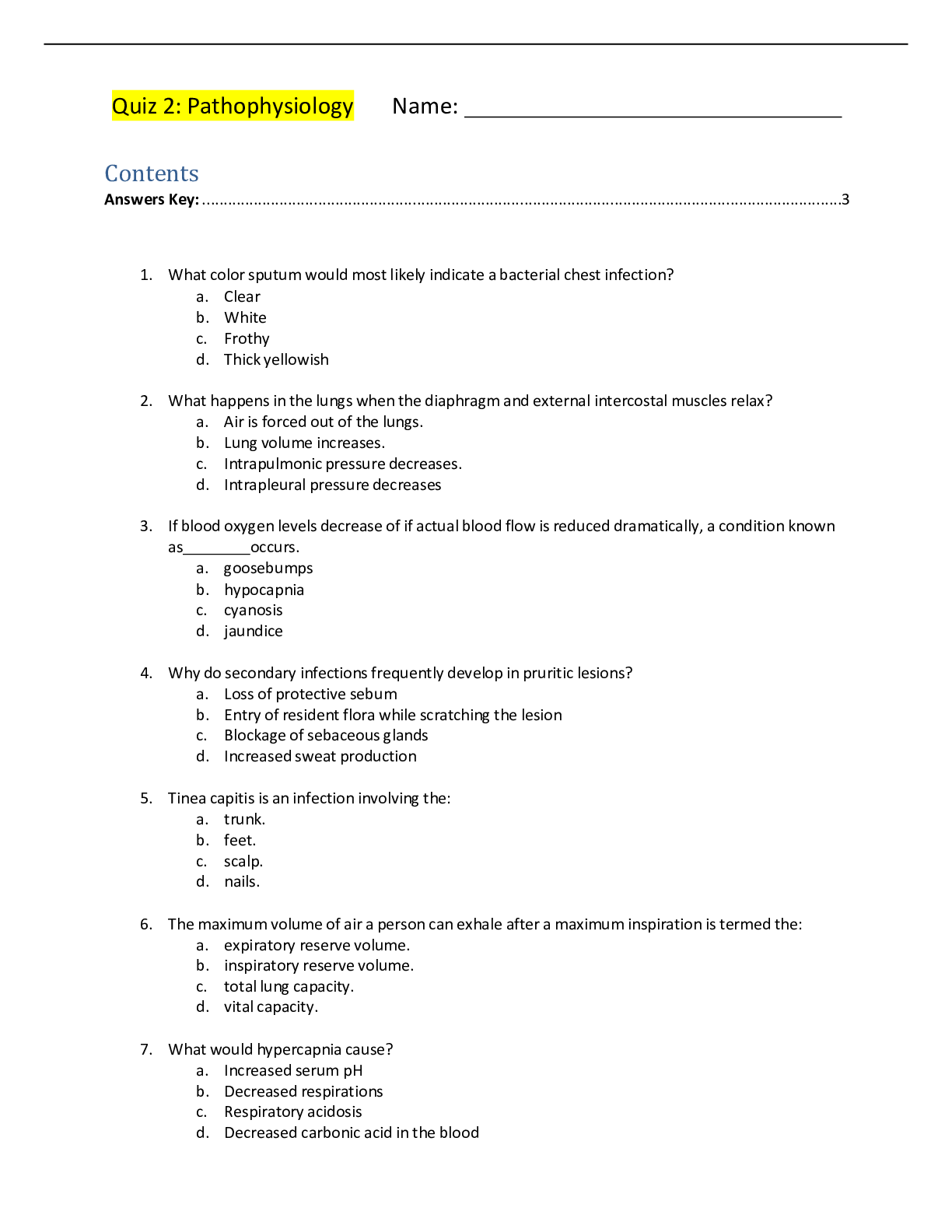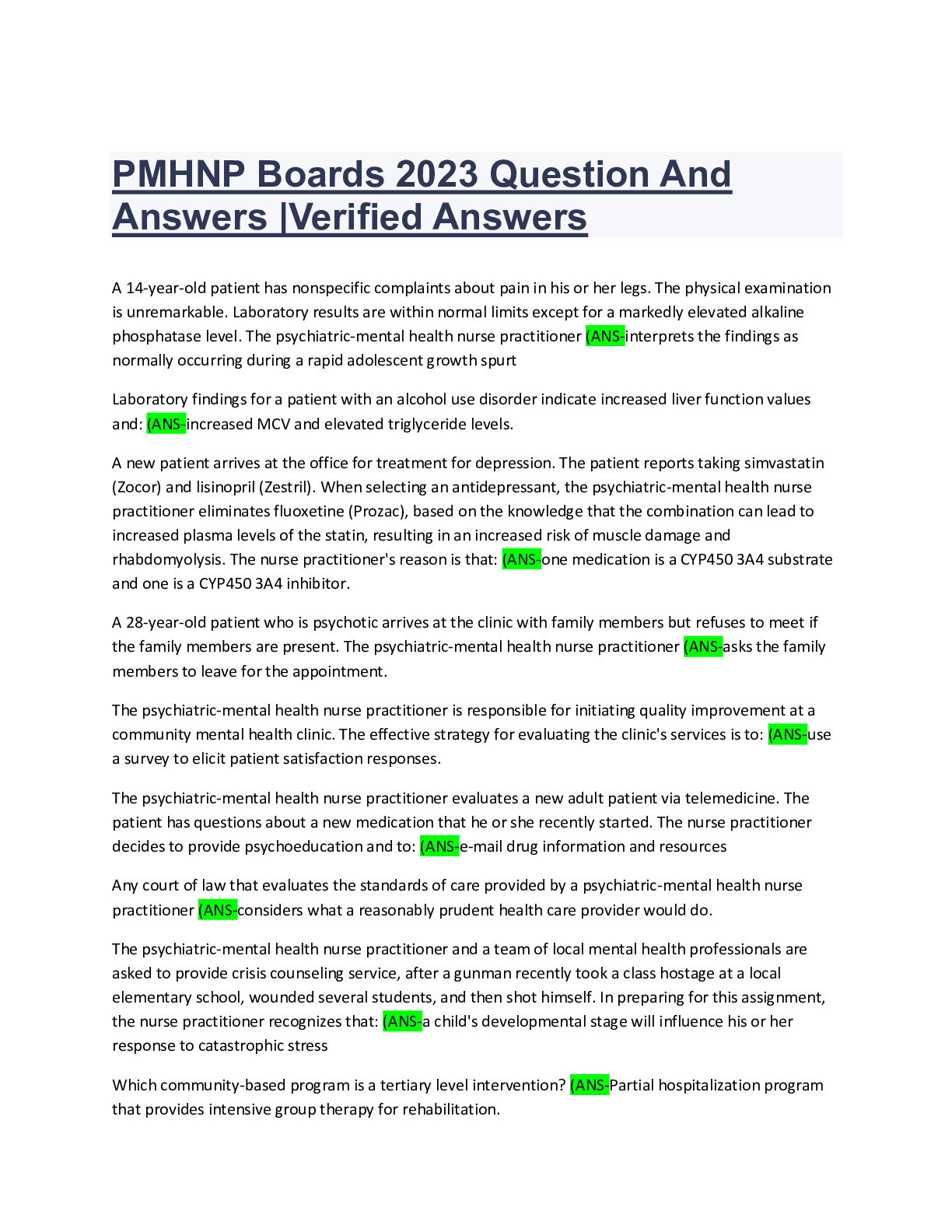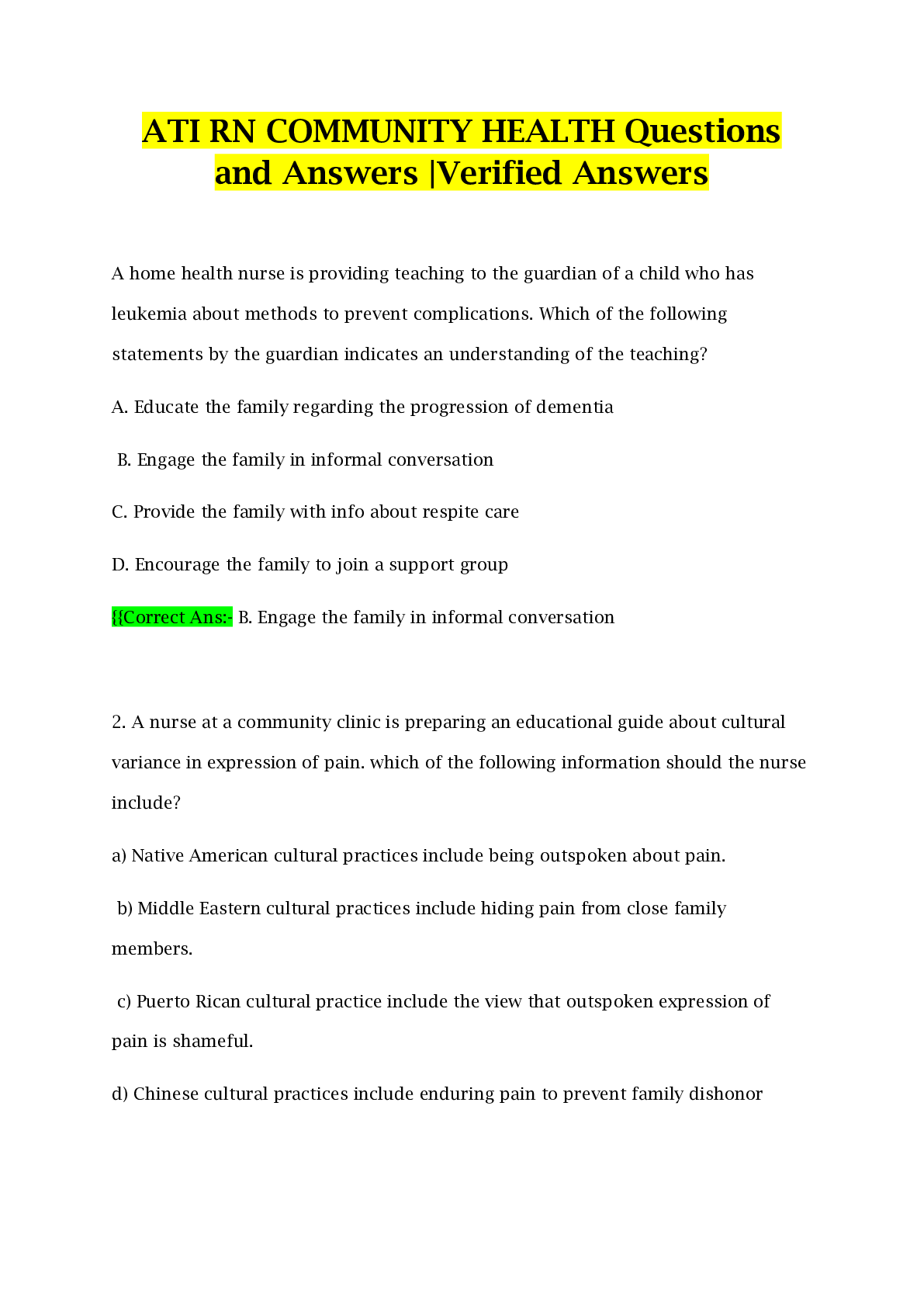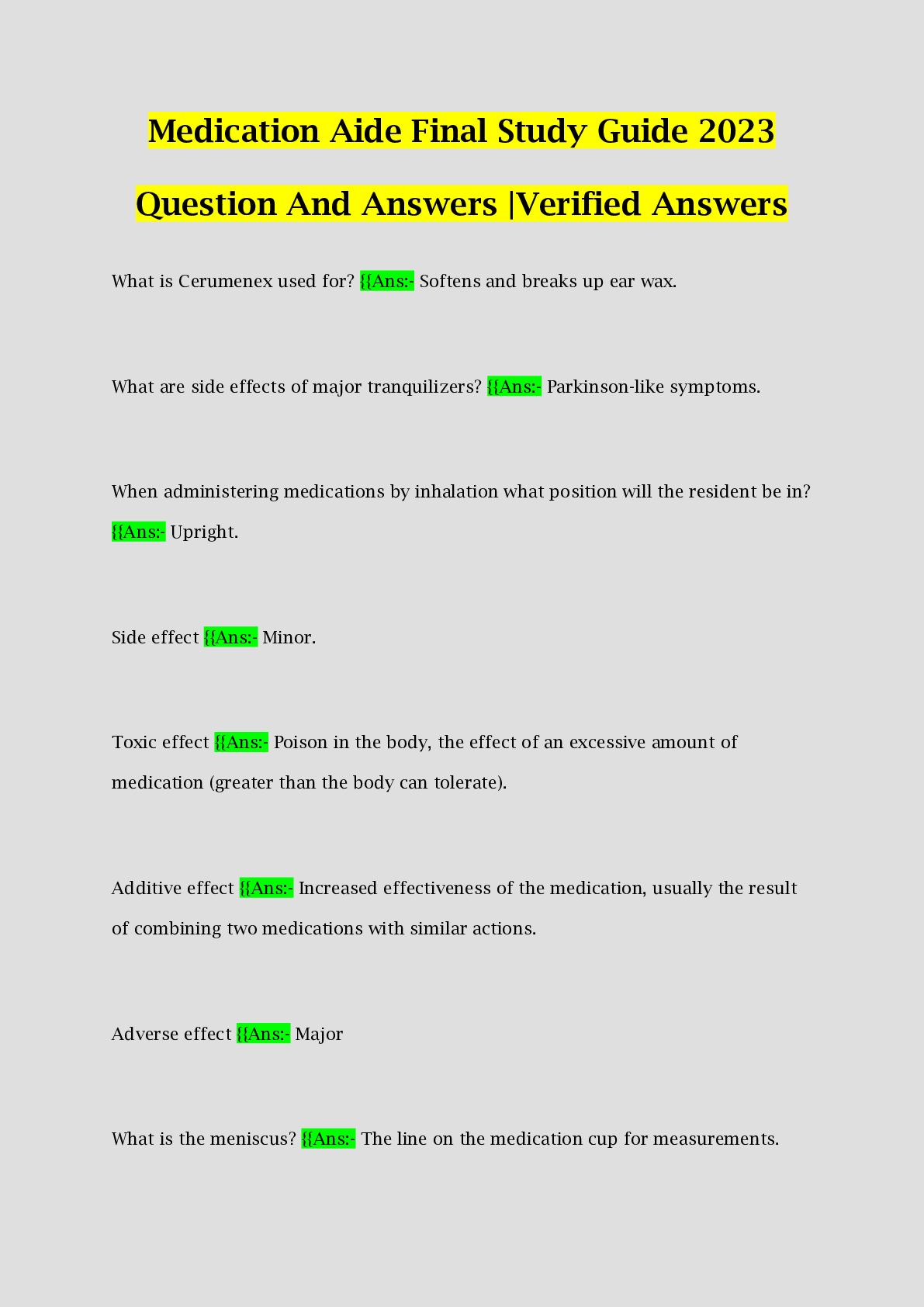MGT435 Week 2 QUIZ-QUESTIONS & ANSWERS |VERIFIED ANSWERS
Document Content and Description Below
MGT435 Week 2 QUIZ-QUESTIONS & ANSWERS Which of the following is an especially critical factor for diagnosing, planning, and implementing organizational change? the change model the organizatio... n selects Correct! the expertise and experience of the organization’s leaders, managers, and change specialists the expertise and experience of the leaders of competing organizations the expertise and experience of the organization’s legal staff The correct answer can be found in Section 2.1 under the heading “Diagnosing Organizations for Change” in Organizational Change, Second Edition. Question 2 1 / 1 pts First-order (adaptive) changes are __________. large, sweeping, and fundamental long term and irreversible transformational Correct! small scale and incremental The correct answer can be found in Section 2.3 under the heading “Assessment Model: Determining What Changes to Make” in Organizational Change, Second Edition. Question 3 1 / 1 pts Which organizational change model does the history of the Apple computing company exemplify? the systems contingency model environment-industry-organization contingency model Correct! the organizational life-cycle model resource dependency theory The correct answer can be found in Section 2.2 under the heading “Steve Jobs and Apple” in Organizational Change, Second Edition. Question 4 1 / 1 pts After all nine steps of the action research model are completed, to which step does the process cycle back/return to? jointly diagnose problem/opportunity/findings with client consult with OD/change management expert plan action steps jointly Correct! present feedback to client The correct answer can be found in Section 2.5 under the heading “How to Change Using Action Research” in Organizational Change, Second Edition. Question 5 1 / 1 pts Large-scale change interventions in firms are typically __________. unplanned circumstances that serve to enhance an organization’s effectiveness unplanned circumstances that serve to inhibit an organization’s effectiveness Correct! planned actions designed to enhance an organization’s effectiveness planned actions designed to prevent management from laying off staff members The correct answer can be found in Section 2.1 under the heading “Diagnosing Organizations for Change” in Organizational Change, Second Edition. Question 6 1 / 1 pts Under what category does “external stakeholders” fit when diagnosing types of change and level of intervention? Correct! people culture strategy structure The correct answer can be found in Section 2.3 under the heading “Assessment Model: Determining What Changes to Make” in Organizational Change, Second Edition. Question 7 1 / 1 pts According to McKinsey and Kotter (1996), approximately what percentage of large organizational changes fail? 1% 10% 50% Correct! 75% The correct answer can be found in “Introduction” in Organizational Change, Second Edition. Question 8 1 / 1 pts Which organizational change model stresses the importance of applying a historical analysis of changes that have occurred over the course of a company’s development? the systems contingency model the environment-industry-organization contingency model Correct! the organizational life-cycle model the resource dependency theory The correct answer can be found in Section 2.2 under the heading “Organizational Life-Cycle Model” in Organizational Change, Second Edition. Question 9 1 / 1 pts Organizational inertia refers to the tendency of organizations to __________. embrace change employ theoretical models for directed change standardize leadership roles Correct! maintain the status quo The correct answer can be found in Section 2.6 under the heading “Why People Resist Change” in Organizational Change, Second Edition. Question 10 1 / 1 pts Which of the following statements is true about the action research stage “collecting postimplementation data”? Correct! Postimplementation data should be collected from internal and external stakeholders, including from people at all position levels. Postimplementation data should be collected from internal and external stakeholders, but not from anyone in top management. Postimplementation data should be collected from external stakeholders only. Postimplementation data should be collected from internal stakeholders only. The correct answer can be found in Section 2.5 under the heading “Collect Postimplementation Data” in Organizational Change, Second Edition. [Show More]
Last updated: 1 year ago
Preview 1 out of 6 pages

Reviews( 0 )
Document information
Connected school, study & course
About the document
Uploaded On
Jan 29, 2021
Number of pages
6
Written in
Additional information
This document has been written for:
Uploaded
Jan 29, 2021
Downloads
0
Views
90


















